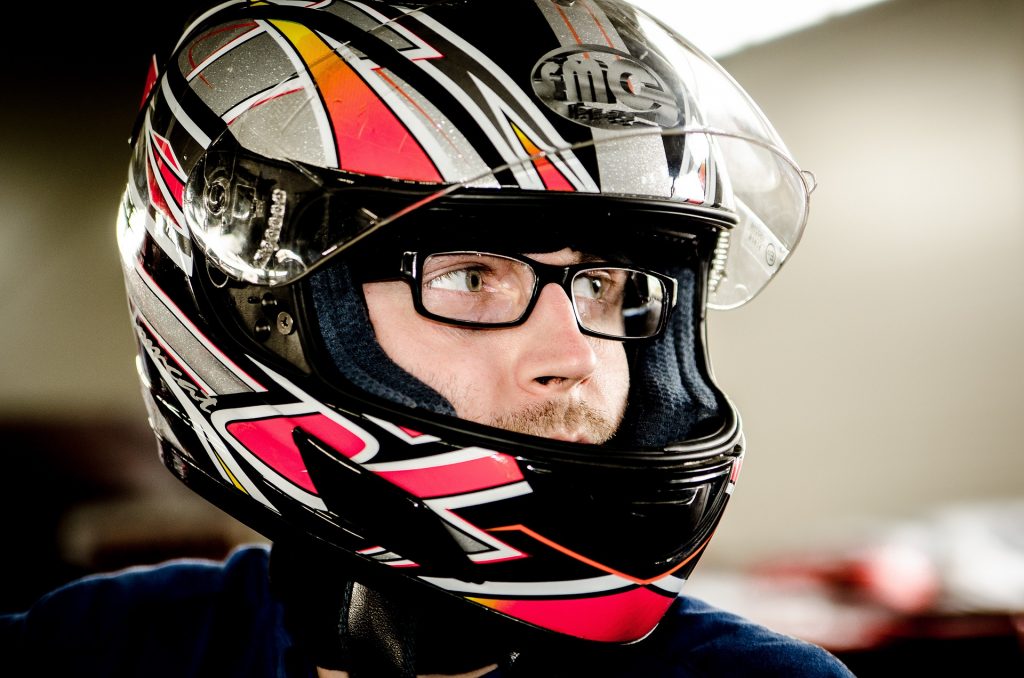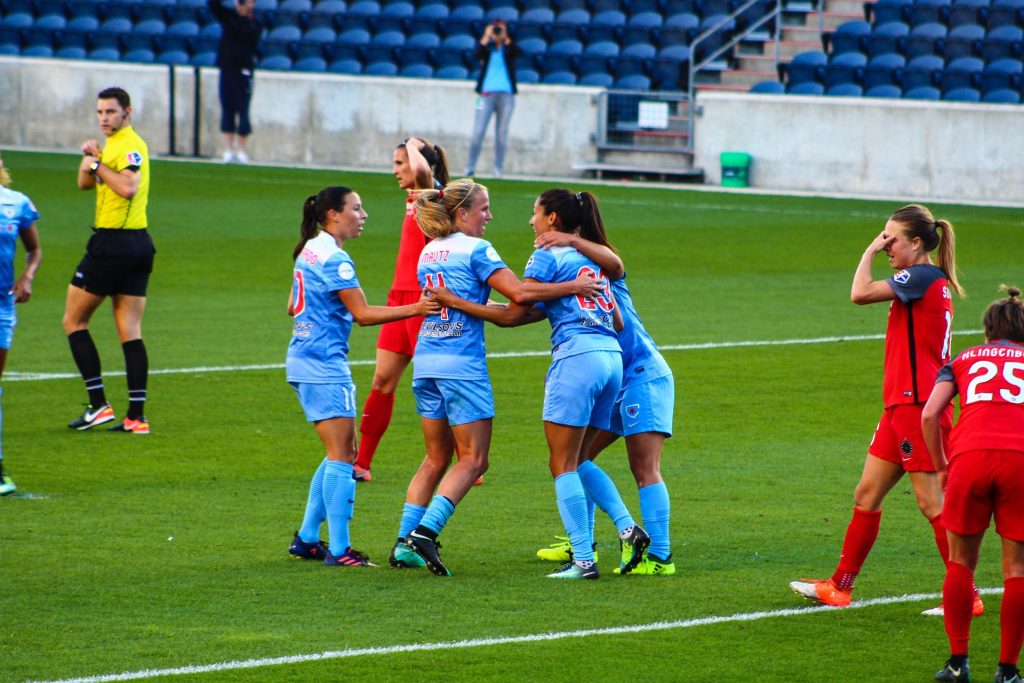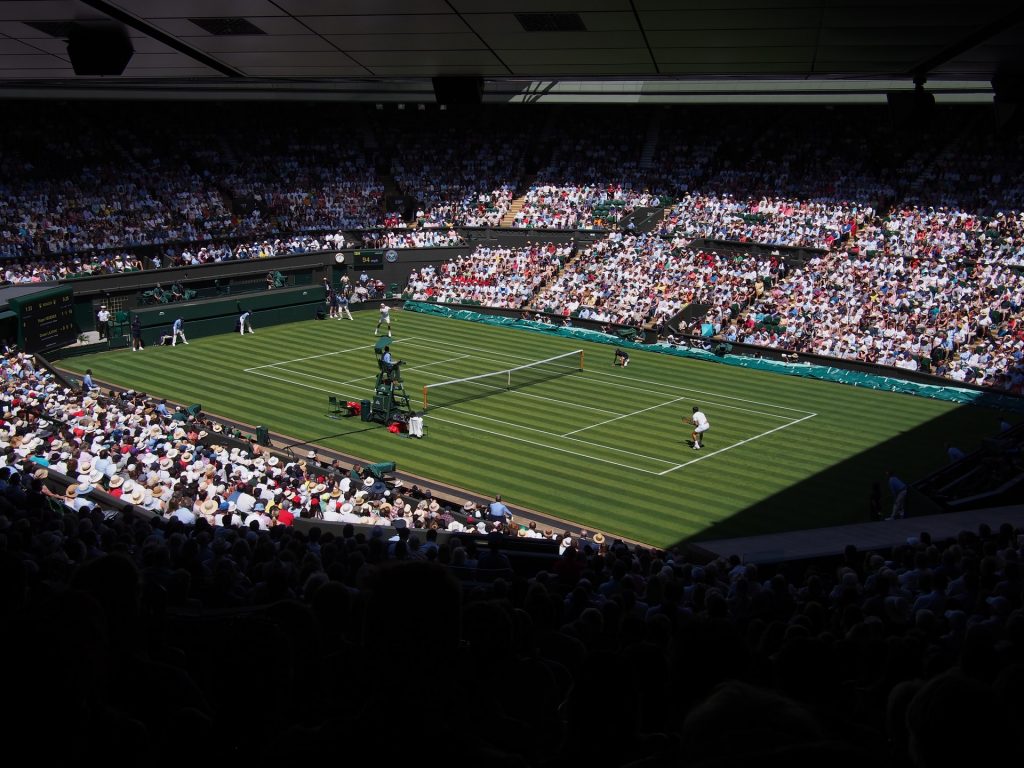Why Is Health And Safety Important In Sport?

Sport and sporting events connect people all around the world. They represent the best of the best competing for honours and unify supporters in a common goal. The benefits of participating in various sports are well-known but the connections formed by supporting a team or athlete can help people, too. One overlooked aspect is Health and safety in sport, and the lengths teams, organisations and governing bodies have gone to in order to protect everyone.
The summer of 2022 is massive for British sport. The Women’s Euros 2022 is hosted in England, while Wimbledon and the British Grand Prix also take place, among other events. This makes it the perfect time to look back on the health and safety procedures that have helped keep players, staff and fans safe over the years.
What Is Health And Safety In Sport?
Health and safety in sports aim to provide a safe environment for everyone. This applies to employees at a workplace as well as customers and guests. A sporting event can be considered a workplace, and that means many of the same policies and procedures can be applied – although for specific events and activities, a specialised health and safety risk assessment is used to identify potential hazards.
Improvements to health and safety legislation has reduced the number of accidents and incidents caused by risks and hazards, but more can be done to help organisations to improve their knowledge of safety in sport.
Clear Rules And Boundaries
With any sport, the rules, boundaries and regulations are essential. Not only do they inform everyone of what is and isn’t allowed, but they are used to keep people safe.
For example, certain tackles in football are not allowed as they are more likely to cause injury to players. Hitting balls randomly in tennis could hurt someone. High tackles in rugby can lead to serious bodily harm.
The rules of every sport have evolved over the years to make the spectacle more enjoyable for fans and safer for participants.
Using The Right Safety Equipment

Not all sports require equipment, but plenty do. Using the right equipment can help athletes stay safe and uninjured, in both training and competition.
Body protection, such as helmets or shin guards, are a great example. Where these used to be a one-size-fits all, there are now a range of options for every size and shape, as well as custom units.
In football and rugby, the right ball can make a difference. The material used, the amount of air inside, and other factors can change the dynamic and flow of a match as well as how safe they are to use.
Health and safety in sports require that every piece of equipment be thoroughly checked and tested before use to make sure it won’t fail or cause injury.
Appropriate Facilities
As each athlete and team seeks better results, they require better facilities. This helps with training and learning, as well as improving their mental wellbeing.
Football is a good example of this. Not only are their stadiums large enough for a huge number of fans to enjoy matches safely – thanks to good exits, evacuation procedures and trained staff, among other things – but training facilities include dedicated staff and equipment to keep athletes safe and in good health. This includes fitness equipment, medical staff, nutritional experts and more.
All of these factors adhere to business plans and practices, which are governed by health and safety policies. Using equipment right and ensuring staff are equipped to handle their duties all play a part in forming a safe environment.
Learning And Improving
The goal of every athlete and sports team is to win and do better than before, but this attitude doesn’t end there. Throughout all areas of the organisation, especially viewed through the business lens, there are ways to improve our knowledge of safety in sport.
While health and safety risk assessments can help reduce the risk of accidents occuring, an accident investigation can make sure that the right lessons are learned should an incident take place.
These should be thorough and well-documented, ensuring that actions are clear and easily implemented. This is the easiest way to improve conditions for everyone, no matter that situation or setting.
Three Sports Where Health And Safety Has Saved Lives
While it might not be the most glamorous aspect, health and safety in sport is crucial for the participants and spectators. Every single sport has benefitted from improvements to rules, regulations, equipment and facilities that have bettered the health and wellbeing of everyone involved.
Some of these changes are brought by health and safety legislation from national governments or governing bodies, and these changes ripple through all levels of the sport in question.
Here are some examples of how health and safety in sport has changed things for the better – with all three of these sports completing big events in the UK across June and July.
Football

With the Women’s Euro 2022 competition taking place in England, the spotlight is firmly on the Three Lionesses as they’ve captured the attention of fans across the country – and their incredible success in the competition is a sign of how far the sport has come.
Football as a whole has made big changes over the years to improve player and fan safety, from the inclusion of media staff at matches to first aid equipment and specialist staff at arenas.
In such an intense competition, players can often push themselves too hard, or suffer from injuries due to accidents. In the past, this could lead to long recovery times as players pushed on when they should be resting or receiving treatment. At worst, it could bring an early retirement. Player welfare – and team success – depends on players being fit and well, which is why so many advances have been made.
On the spectator side, health and safety in sport means risk assessments are carried out regularly to make sure stadiums and facilities are able to handle the large number of fans who attend. Crowd control, crushes, medical emergencies – even entrances and exits need to be inspected regularly to reduce the risk of hazards.
This work continues. Even now, the Football Association are concerned with the impact of head injuries in later life and are trialling a ban on heading the ball for younger players.
Tennis

Wimbledon has long been one of the biggest sporting events of the British summer, and one of the four tennis Grand Slam events. It holds a unique position within the sport and the hearts of the public.
Often seen as an individual sport, the facilities at Wimbledon have evolved to ensure that athletes can stay in top condition as our knowledge of safety in sport has improved. This includes practice courts – to account for the grass surface – fitness equipment, and medical staff for any injuries.
Some courts have roofs that can be closed to protect players and fans from bad weather, which can otherwise increase the risk of injury inside the courts, and there are strict rules on what can happen when – such as when people can enter or exit a court, when players can request trainers, when play is stopped or resumed after rain, and even when spectators can make noise! This is to ensure a positive atmosphere for everyone, while limiting blockages at exits or slowing down emergency responders when needed.
During a match, in recent years it has become acceptable to seek medical help without retiring from a match. This improves player health and wellbeing while providing a better show for all viewers.
Formula 1

Formula 1 is one of the premier forms of motorsport, attracting global attention on every race weekend. The UK has a longstanding connection to the sport, and motorsport in general. The British Grand Prix takes place each July, and the majority of F1 teams are based in the country.
Every racing driver understands the risks involved, but thankfully the mortality rate has dropped significantly over the years as our knowledge of safety in sport increased. The cars undergo rigorous and thorough safety tests to keep drivers safe. They are designed to come apart in certain conditions, while head protection has improved with the Halo device.
New and improved race suits saved a driver engulfed in flames in recent years, while another car landed upside down in this year’s British Grand Prix. Even just 20 years ago, this kind of incident could have been fatal but a key safety feature, named the Halo, has provided better head protection while ensuring the cars remain open-topped.
These safety features are transferred to everyday road cars in time, from better structures and seatbelts to improved brakes and engine controls.
What Else Can Be Done To Improve Health And Safety In Sport?
Across every sport, more can be done to improve the wellbeing of everyone involved. This includes players or athletes, staff members, fans, and everyone else connected to it. Health and safety in sport is an evolving topic, and as our understanding of people, processes and technology improves, so will our safety measures.
Risk assessments are a tool to highlight potential risks in a specific setting, but it’s important to learn the right lessons when incidents do occur. Thorough accident investigations and updated health and safety regulations can help in any workplace, but are especially important in sport due to their high profile natures.
If you’d like to know more about improving health and safety in the workplace, or how to implement changes to benefit the wellbeing of employees and customers, then get in touch with the experts at Rhino Safety.
